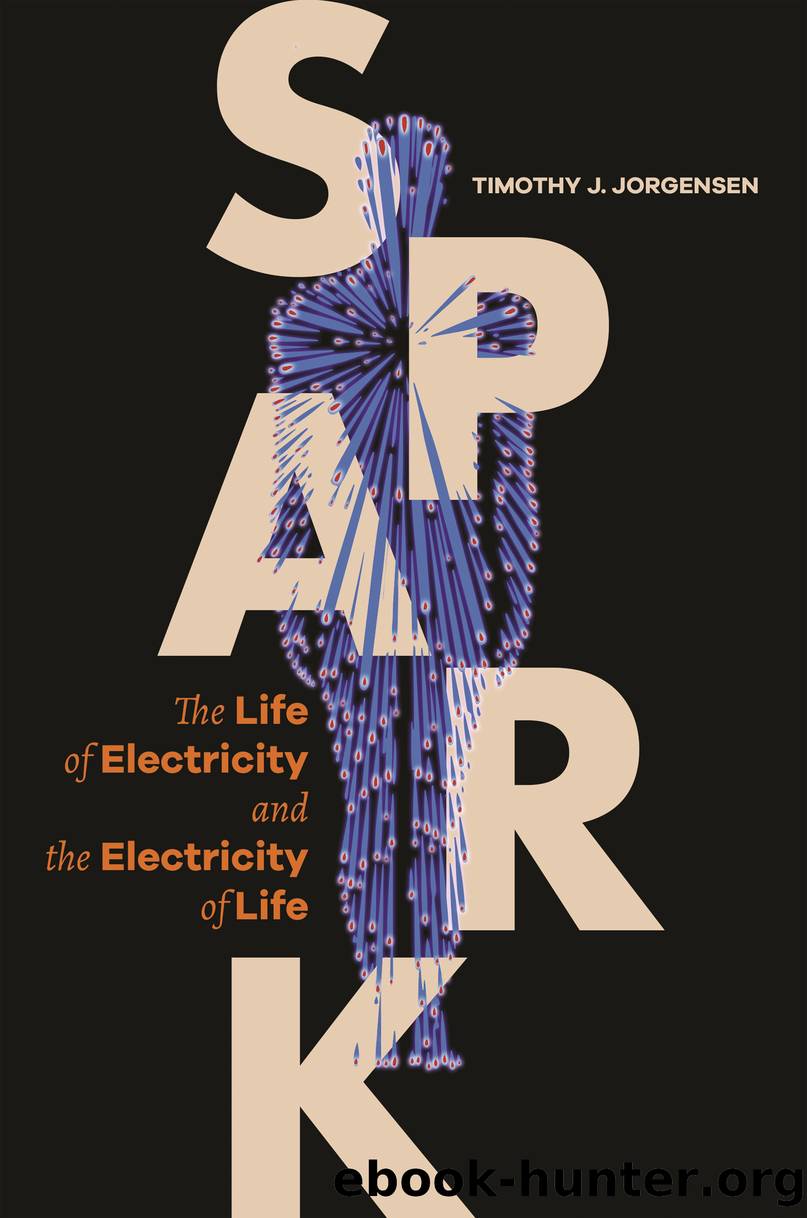Spark by Timothy J. Jorgensen

Author:Timothy J. Jorgensen
Language: eng
Format: epub
Publisher: Princeton University Press
Published: 2021-08-03T00:00:00+00:00
I said earlier that an electric current is the rate of flow of electric charge past some particular point. Notice I did not specifically say ânegative chargeâ; I just said âcharge.â Yes, I know; when we discussed the electron, my explanation left the impression that all electric currents are due to the movement of negatively charged electrons. I did that because for most electronic circuits that is exactly the case. But thatâs not so for electric currents in neurons. The electric current across the cell membranes of neurons is due to the flow of positive charge, not negative charge. If you feel Iâve deceived you, please accept my apology. I hope you arenât now skeptical of me. But I thought telling the half-truth was justified in order to illustrate a larger point: electrons represent the most fundamental unit of electrical charge. Now that we all appreciate that point, letâs look at a situation where, remarkably, you can have an electric current without moving electrons.
As we discussed in chapter 9, the importance of the electron largely has to do with its chemistry. Electrons make up the âglueâ that holds atoms together to form molecules. In the case of metallic elements, the atomic nuclei have only a loose grip on the electrons in their outer orbitals. This permits metals to act in a special way as far as electricity is concerned. The fact that the positively charged nuclei of metals donât have a solid grip on their outer negative electrons means that the atoms of metals readily ionize into positive ions when external forces dislodge one of their outer electrons. These charged atoms (i.e., ions) have a net positive charge because their vagabond outer electrons have gone missing, taking their negative charge along with them. What this means, in practical terms, is that for a solid piece of metal, like a copper wire, only the electrons are available to take a journey; the positively charged atomic nuclei must stay put. Thatâs why, for electrical circuits made from metals, the movement of electrons, and electrons only, is producing the current. They move in synchrony among the immobilized metal ions, hopping from nucleus to nucleus, as they travel within the wire.
But for other materials, such as saltsâcompounds that spontaneously form ions when dissolved in waterâand ions that are dispersed within a gas, electrons are only a part of the story. In such cases, all the ions, both positively and negatively charged, are free to move within the liquids and gases, and thus participate in generating the electric current, moving along the lines of force of an electric field toward the attracting electrode. However, the large size of most ions retards their movement. As a result, any race between ions and electrons in either a liquid or a gas is always won by the electrons. Their extremely small size allows electrons to travel amazingly fast. Ions, in contrast, are relative slowpokes.
You might wonder why neurons put their money on the slowpoke. Basically, it comes down to a matter of control.
Download
This site does not store any files on its server. We only index and link to content provided by other sites. Please contact the content providers to delete copyright contents if any and email us, we'll remove relevant links or contents immediately.
| Automotive | Engineering |
| Transportation |
Machine Learning at Scale with H2O by Gregory Keys | David Whiting(4257)
Never by Ken Follett(3875)
Urban Outlaw by Magnus Walker(3363)
OPNsense Beginner to Professional by Julio Cesar Bueno de Camargo(3261)
Sapiens and Homo Deus by Yuval Noah Harari(3025)
Will by Will Smith(2872)
A Short History of Nearly Everything by Bryson Bill(2656)
Hooked: A Dark, Contemporary Romance (Never After Series) by Emily McIntire(2527)
Rationality by Steven Pinker(2326)
Borders by unknow(2280)
The Becoming by Nora Roberts(2148)
Holy Bible (NIV) by Zondervan(2100)
HBR's 10 Must Reads 2022 by Harvard Business Review(1820)
A Short History of War by Jeremy Black(1815)
The One Percenter Encyclopedia by Bill Hayes(1810)
Freedom by Sonny Barger(1783)
Go Tell the Bees That I Am Gone by Diana Gabaldon(1729)
Five Ways to Fall by K.A. Tucker(1723)
Girls Auto Clinic Glove Box Guide by Patrice Banks(1706)
